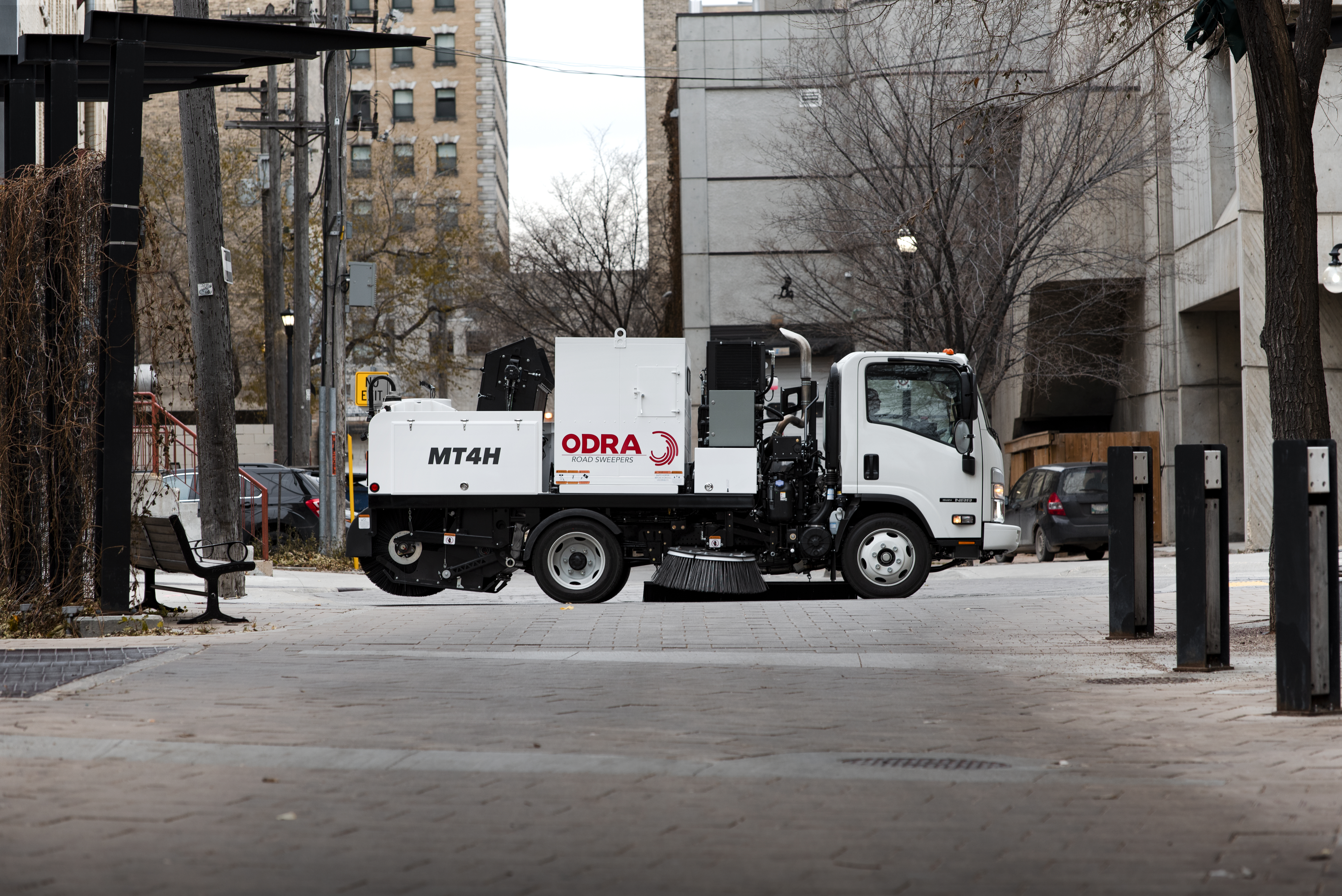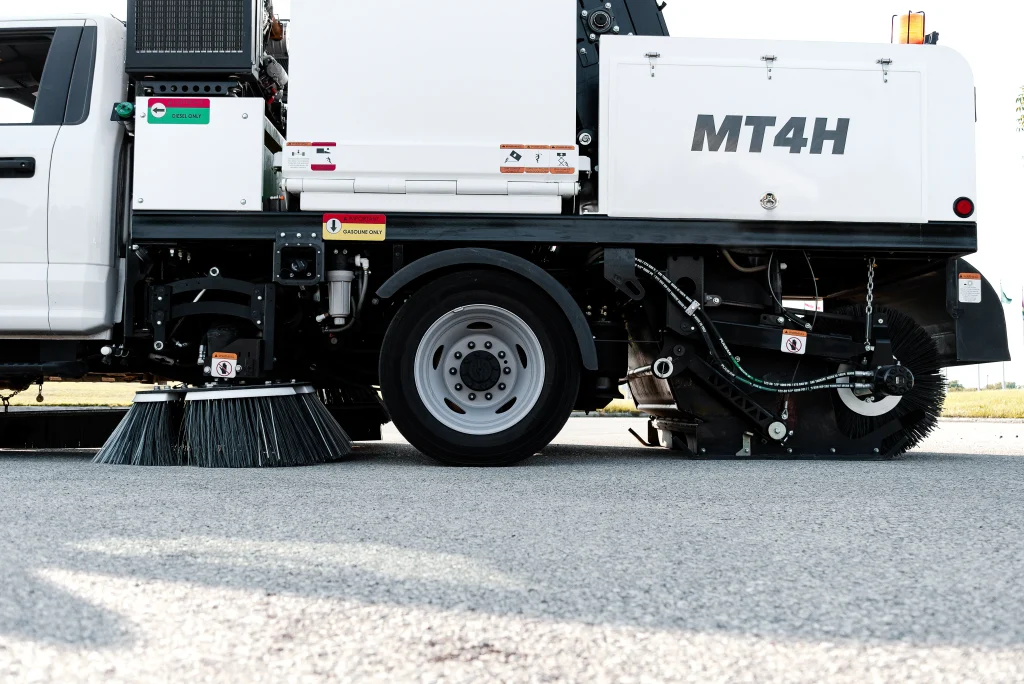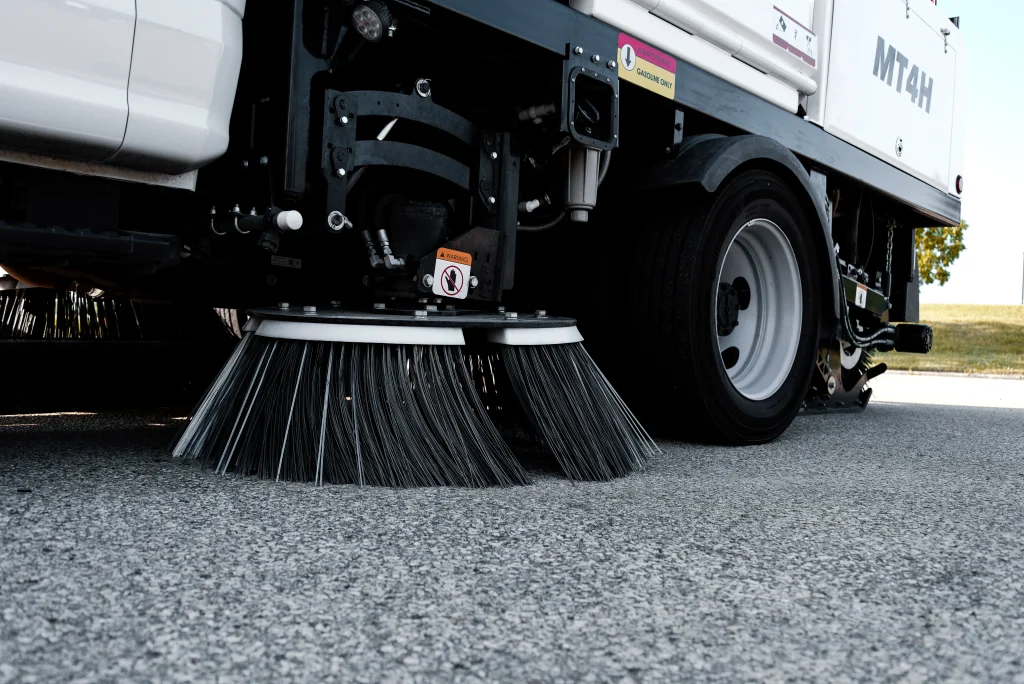Buying Guide: What Type Of Sweeper Is Right For You?
Not sure where to start when making the decision to purchase a new
sweeper? Understanding what your options are is imperative to the task. Whether you’re dealing with heavy-duty debris or need a solution for lighter cleaning tasks, understanding these sweeper types will help you make an informed choice.
TYPES OF SWEEPERS
Mechanical Broom
Mechanical sweepers use the main broom to physically sweep up material from the ground onto a mechanical conveyor. The conveyor is approximately 1.5 m wide and is located just in front of the broom. Two side brooms work to dislodge debris from gutters and roadways where it is guided to the main broom. Almost every piece of material moved by the main broom is successfully moved onto conveyor and transported to the hopper. If some material doesn’t reach the conveyor, it drops in the front of the main broom where it has another attempt to be swept onto the conveyor. Because the system mechanically lifts debris, it is better suited for heavy duty applications such as milling, coarse sand, and heavy cleanup.
Regenerative Air
Using an engine-powered blower, the regenerative air’s two side brooms guide road debris toward a pickup window under the machine, sucking the debris into the hopper with a large vacuum-like attachment head. The blower blasts air at the road surface to lift any stubborn dust. They excel at light-medium debris, such as sand, dust, as well as leaves and light brush.

Pure Vacuum
Vacuum sweepers use an engine-powered fan to create suction, and a high-powered vacuum nozzle sucks up debris. The pickup nozzle is located in front of the rear axle and is approximately 0.3 m wide. It rolls on the surface with a set of caster wheels. Debris is picked up by the nozzle and flows through the vacuum stream to a filter that stops debris. The debris is separated and collected in a bin, while the air stream is released into the atmosphere. They are good for lighter applications such as
street sweeping or catch basin cleaning.
| Mechanical |
Regenerative Air |
Vacuum |
- Ideal for heavy debris such as sand, asphalt etc.
- Variable height hopper lift.
- Ideal for uneven surfaces.
- Easy servicing and maintenance.
- Quieter than vacuum.
|
- Ideal for lighter debris such as sand, dust or leaves.
- Ideal for smooth surfaces.
- Wider vacuum heads.
- Unsuitable for milling or heavy spring cleanup.
|
- Ideal for dust and trash.
- Ideal for smooth surfaces such as airports and parking lots.
- Typically have larger hopper capacity.
- Narrow cleaning path.
|
When it comes to selecting a sweeper, understanding the different types available is crucial. Whether you’re managing heavy-duty cleanup, tackling light debris, or maintaining streets, there’s a sweeper designed to meet your specific needs.
Contact Our Team : Need assistance in choosing the right sweeper for your specific application? Our expert team is here to help! Reach out to us today for personalized guidance and recommendations. Let’s keep your streets clean and efficient!









